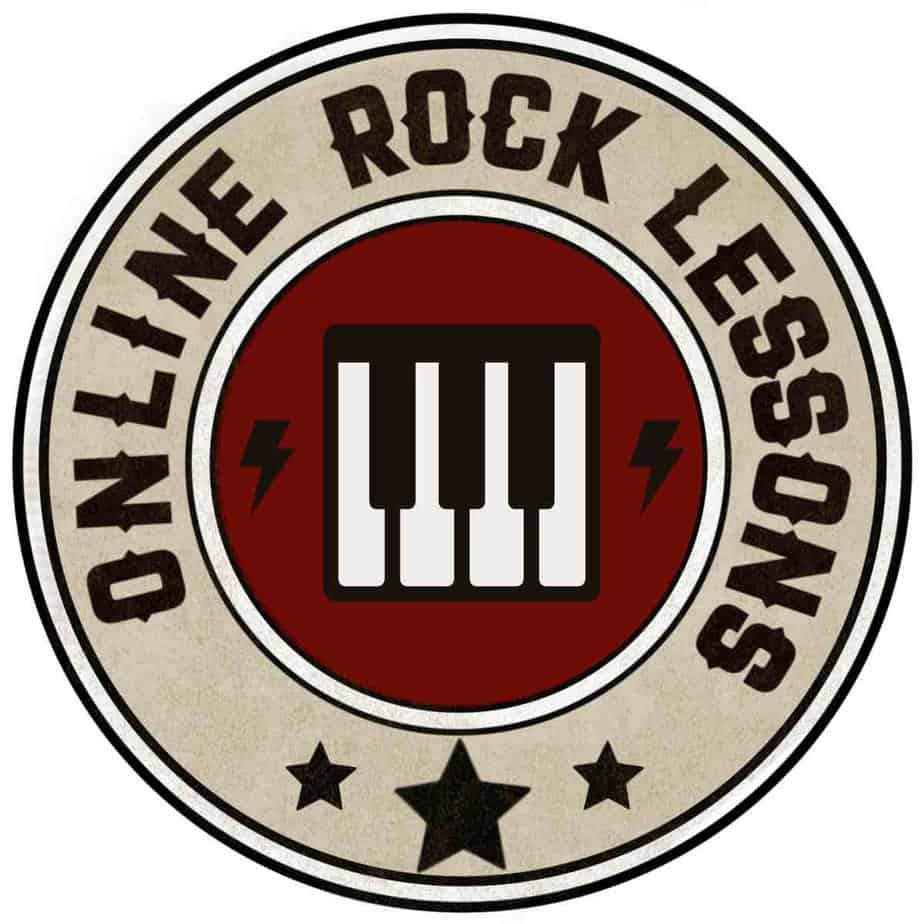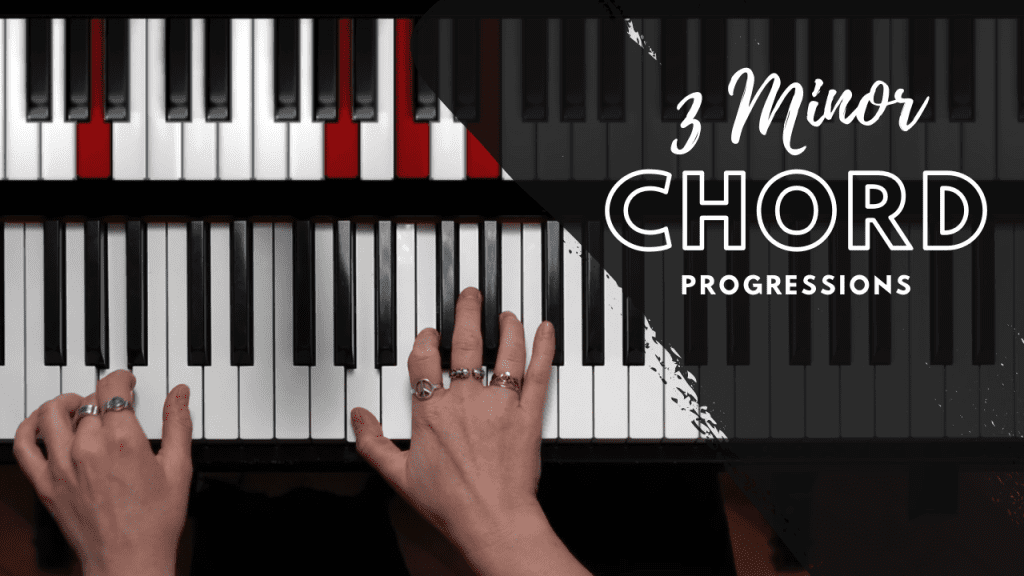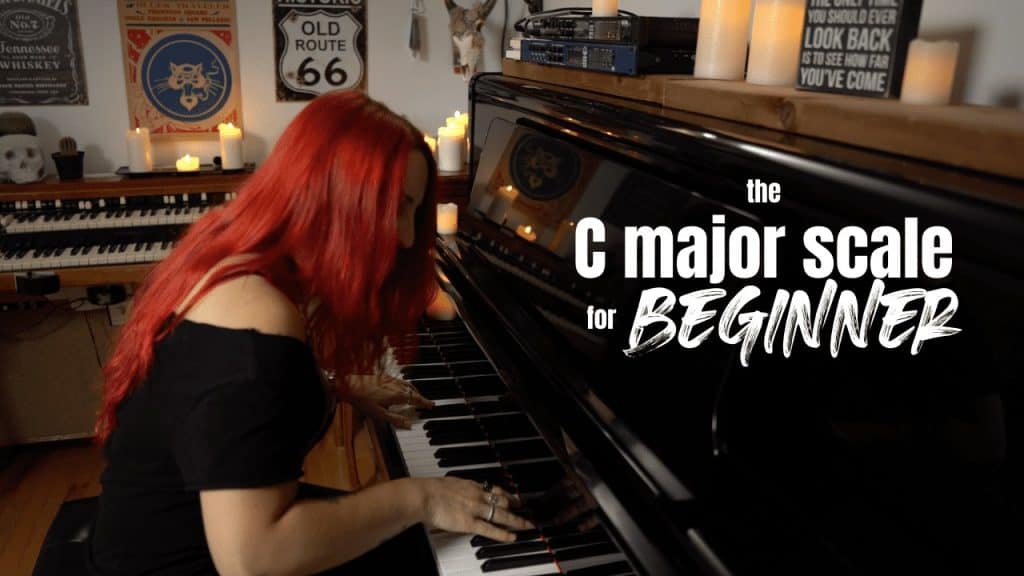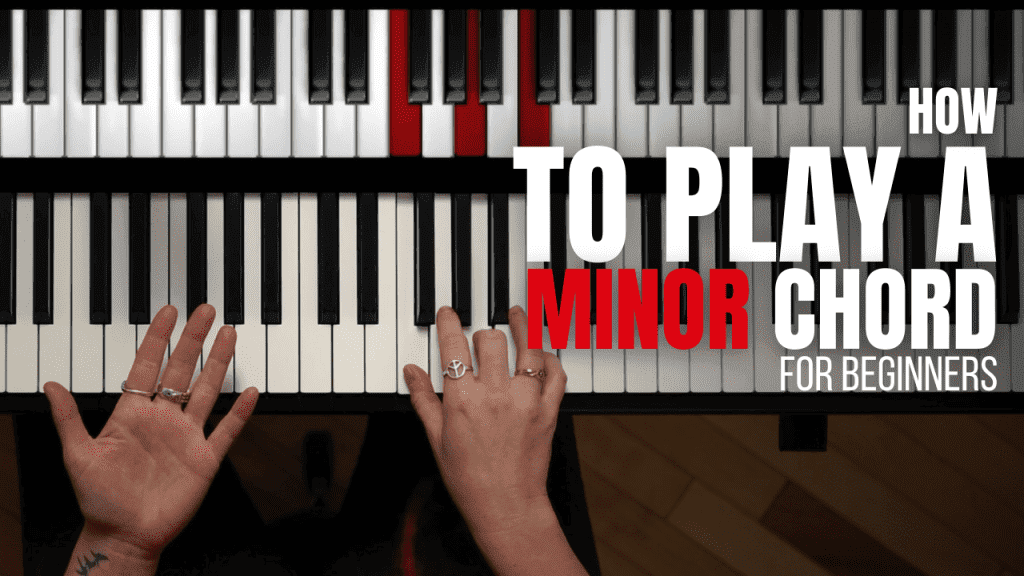3 Beautiful Minor Chord Progressions
3 BEAUTIFUL MINOR CHORD PROGRESSIONS
MARINE LACOSTE / CHORDING / JUN 3, 2022
3 BEAUTIFUL MINOR CHORD PROGRESSIONS
MARINE LACOSTE / CHORDING / JUN 3, 2022
In this lesson, we will be discovering 3 minor chord progressions to compose or practice chords with.
To build our 3 different minor chord progressions, we will use the degrees of the natural minor scale. Let’s use the A natural minor scale, which is C major’s relative minor scale. The relative minor of a major scale is its sixth degree. A is C major’s sixth degree. Just like the C major scale, the A natural minor scale has no sharp or flat in the key signature.
Diatonic Chords
Now that we know the notes of the A natural minor scale, it is time to build the triads that come from the different degrees of the scale. These triads can only contain notes that are in the A natural minor scale.
The Roman numerals of the natural minor scale are i, iib5, III, iv, v, VI, VII.
This means that the chord based on the first degree of the scale is minor. The chord based on the second degree is minor flat 5. The chord based on the third degree is major. The chords based on the fourth and fifth degrees are minor and the chords based on the sixth and seventh degrees are major.
Chord Progression #1: i-III-VI-VII
The first minor chord progression that we are learning is the “i-III-VI-VII”. In the A natural minor key, the chords of this progression are Am-C-F-G.
It is important to practice this progression in all inversions. By finding the closest voicing to go from one chord to another, inversions lead to a smoother playing.
Transposition
When working with Roman numerals as we do with our “i-III-VI-VII” movement, transposing our progressions in all keys is very beneficial for mastering major and minor chords.
Let’s transpose our “i-III-VI-VII” progression in the D minor key. The D natural minor key has a Bb at the key signature.
The chord associated with the first degree of the scale is Dm. The chord associated with the third degree is F. The chord associated with the sixth degree is Bb. Finally, the chord associated with the seventh degree is C. Therefore, in the key of D minor, the “i-III-VI-VII” progression is Dm-F-Bb-C.
Chord Progression #2: i-VII-VI
The second minor chord progression we are learning is the “i-VII-VI”. In the A natural minor scale, the chords of this progression are Am-G-F.
You should also practice this progression in all inversions and all keys.
Chord Progressions #3: i-VI-V-VII
The third chord progression that we are learning is the “i-VI-V-VII”. In the A natural minor key, the chords of this progression are Am-F-Em-G.
You can now use these three minor chord progressions to compose or to practice your chords. As mentioned earlier, the most beneficial way to practice these is by exploring the inversions and by transposing in all keys. Transposing chord progressions is a fun and concrete way to practice major and minor chords.
Text Transcription by Andreane Boucher
Dans cette leçon, nous allons découvrir 3 progressions d’accords mineurs pouvant être utilisées pour composer ou tout simplement pour pratiquer les accords.
Afin de construire nos progressions, nous allons nous baser sur les degrés de la gamme mineure. Prenons la gamme mineure naturelle de La. Celle-ci est la relative mineure de la gamme de Do majeur puisqu’elle se trouve au 6e degré de la gamme de Do majeur. Elle a la même armature que la tonalité de Do majeur, donc aucune altération.
Accords diatoniques
Maintenant que nous avons établi les notes de la gamme de La mineur naturel, nous pouvons bâtir des triades à partir de chacun des degrés de celle-ci. Ces triades ne peuvent que contenir les notes qui se trouvent dans la gamme de La mineur naturel. Les chiffres romains pour les gammes mineures naturelles sont i, iib5, III, iv, v, VI et VII.
Cela signifie que l’accord du premier degré est majeur, celui du deuxième degré est mineur b5, celui du troisième degré est majeur, ceux du quatrième et du cinquième degré sont mineurs et ceux du sixième et du septième degré sont majeurs.
Progression d’accords #1 : i-III-VI-VII
La première progression d’accords que nous allons apprendre est la « i-III-VI-VII ». Dans la tonalité de La mineur naturel, les accords de cette progression sont Am-C-F-G (La mineur, Do, Fa et Sol).
Il est important de bien comprendre chaque accord ainsi que ses renversements afin de maîtriser toutes les possibilités de la progression.
Transposition
Lorsqu’on travaille avec des chiffres romains, comme nous le faisons en nommant la progression « i-III-VI-VII », il est bénéfique de s’entraîner à transposer les progressions dans toutes les tonalités.
Transposons notre progression en Ré mineur. Dans la gamme de Ré mineur naturel, il y a un sib à l’armure.
L’accord au premier degré de la gamme de Ré mineur est Dm (Ré mineur), celui au troisième degré est F (Fa), celui au sixième degré est Bb (Sib) et celui au septième degré est C (Do). Donc, la progression « i-III-VI-VII » dans la tonalité de Ré mineur est composée des accords Dm-F-Bb-C.
Progression d’accords #2 : i-VII-VI
La deuxième progression d’accords que nous allons découvrir est la « i-VII-VI ». Dans la tonalité de La mineur naturel, les accords de cette progression sont Am-G-F (La mineur, Sol majeur et Fa majeur).
Tout comme la première progression, celle-ci est à pratiquer dans tous les renversements ainsi que dans toutes les tonalités.
Progressions d’accords #3 : i-VI-V-VII
La troisième progression que nous allons apprendre est la « i-VI-V-VII ». Dans la tonalité de La mineur naturel, les accords de cette progression sont Am-F-Em-G (La mineur, Fa, Mi mineur et Sol).
N’oubliez pas de pratiquer ces progressions dans tous les renversements ainsi que dans toutes les tonalités. La transposition des différentes progressions d’accords est un excellent moyen d’apprendre les accords majeurs et mineurs de façon motivante et concrète.
Transcription par Andréane Boucher
Share this:
Founder of Online Rock Lessons, Marine is the keyboardist for Uncle Kracker, Corey Hart and Highway Hunters.
With over 20 years of experience in show business, Marine is launching the first Canadian Music School dedicated to rock and blues lovers.
More Lessons










